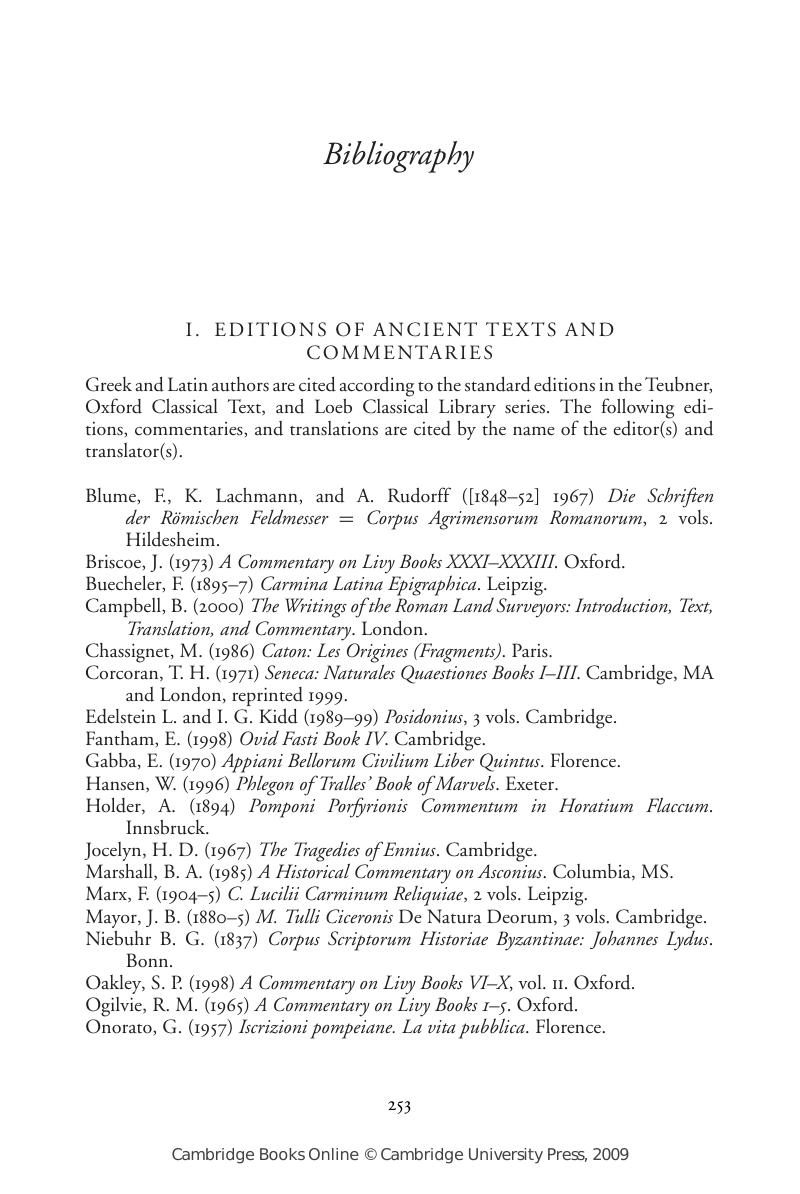Book contents
- Frontmatter
- Contents
- List of illustrations
- List of contributors
- Acknowledgments
- List of abbreviations
- Introduction
- Chapter 1 Reconsidering “religious Romanization”
- Chapter 2 In search of the Etruscan priestess: a re-examination of the hatrencu
- Chapter 3 Etruscan religion at the watershed: before and after the fourth century bce
- Chapter 4 Religious locales in the territory of Minturnae: aspects of Romanization
- Chapter 5 Religion and memory at Pisaurum
- Chapter 6 Inventing the sortilegus: lot divination and cultural identity in Italy, Rome, and the provinces
- Chapter 7 Hot, cold, or smelly: the power of sacred water in Roman religion, 400–100 bce
- Chapter 8 Religion and politics: did the Romans scruple about the placement of their temples?
- Chapter 9 Juno Sospita and Roman insecurity in the Social War
- Chapter 10 Beyond Rome and Latium: Roman religion in the age of Augustus
- Bibliography
- Index
- References
Bibliography
Published online by Cambridge University Press: 08 January 2010
- Frontmatter
- Contents
- List of illustrations
- List of contributors
- Acknowledgments
- List of abbreviations
- Introduction
- Chapter 1 Reconsidering “religious Romanization”
- Chapter 2 In search of the Etruscan priestess: a re-examination of the hatrencu
- Chapter 3 Etruscan religion at the watershed: before and after the fourth century bce
- Chapter 4 Religious locales in the territory of Minturnae: aspects of Romanization
- Chapter 5 Religion and memory at Pisaurum
- Chapter 6 Inventing the sortilegus: lot divination and cultural identity in Italy, Rome, and the provinces
- Chapter 7 Hot, cold, or smelly: the power of sacred water in Roman religion, 400–100 bce
- Chapter 8 Religion and politics: did the Romans scruple about the placement of their temples?
- Chapter 9 Juno Sospita and Roman insecurity in the Social War
- Chapter 10 Beyond Rome and Latium: Roman religion in the age of Augustus
- Bibliography
- Index
- References
Summary

- Type
- Chapter
- Information
- Religion in Republican Italy , pp. 253 - 291Publisher: Cambridge University PressPrint publication year: 2006

